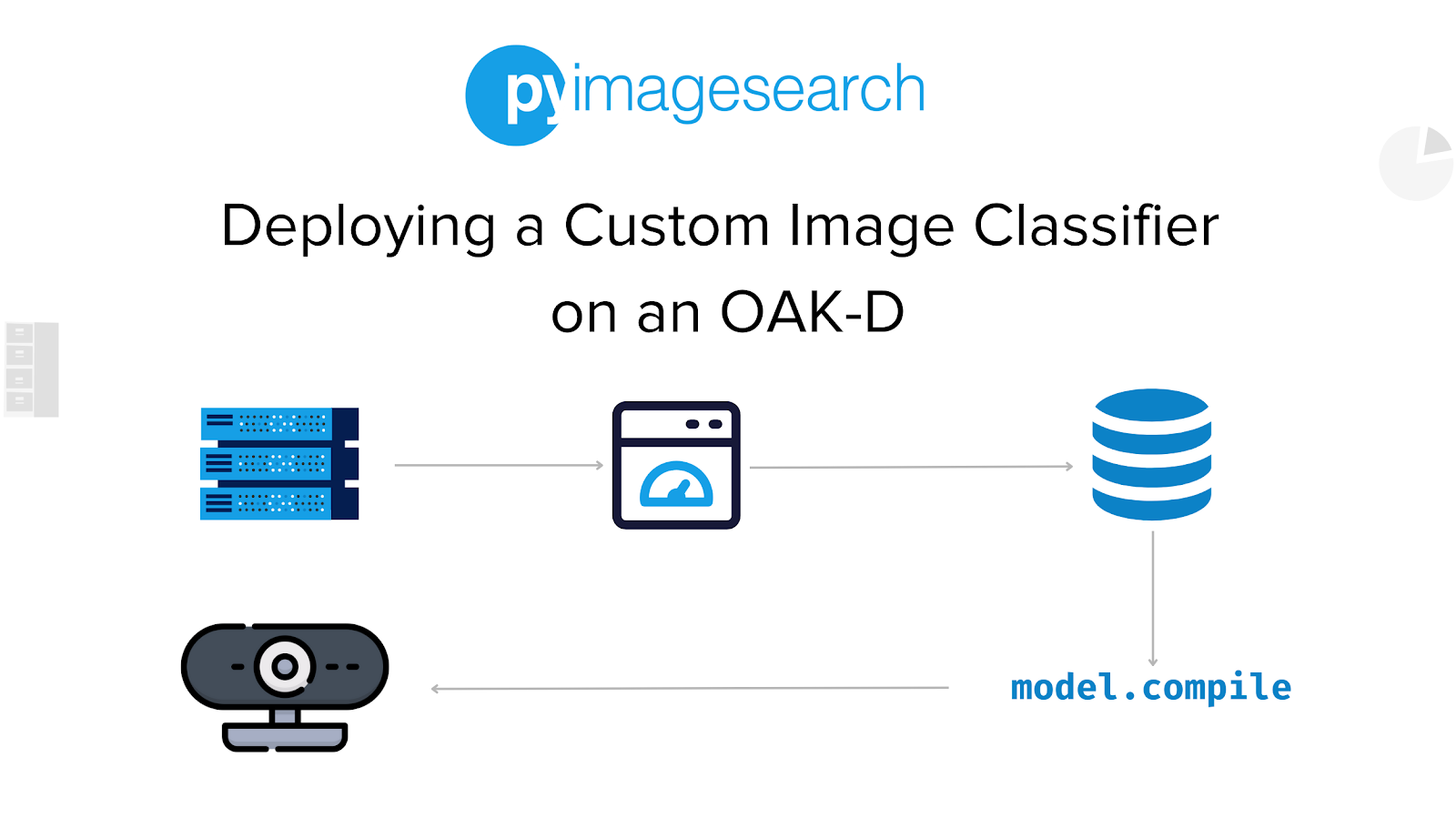| Hi, This week you'll learn about Deploying a Custom Image Classifier on an OAK-D. 
We are excited to announce our latest blog post on deploying machine learning models on OAK devices. The OAK-101 series has been a comprehensive guide to understanding the OpenCV AI Kit (OAK). In this final tutorial, we cover the OAK model deployment process. In the previous blog post of this series, we trained a custom image classifier specifically designed for an edge device. Finally, we will learn to seamlessly deploy models in our OAK edge device. Throughout this series, we aim to give you a complete rundown of the OAK family intricacies and how it works in practice. This blog post will serve as the final puzzle piece in our little journey into state-of-the-art edge computing through the OAK family. The big picture: We know that machine learning models are powerful tools for solving complex problems, but deploying them can be challenging. OAK is a popular platform for deploying machine learning models, and our tutorial will show you how to take your trained models and deploy them on OAK devices. How it works: Despite its countless pros, there is no direct support for deep learning frameworks (e.g., TensorFlow, PyTorch, etc.). As supported by the OAK devices, we show the process of converting your trained models to the .blob format (using OpenVINO). The OAK hardware visual processing unit runs on the MyriadX processor. For the final step, we will learn to test the deployed models and wrap up the pipelines. Our thoughts: We believe that deploying machine learning models on edge devices like the OAK has enormous potential for various applications. By deploying models on edge devices, we can reduce the need for cloud computing resources and improve privacy by keeping sensitive data on local devices. We hope this tutorial will help you explore the potential of deploying machine learning models on edge devices and inspire you to develop your own applications. Yes, but: While deploying machine learning models on edge devices like OAK has many benefits, it also has some limitations. For example, edge devices have limited processing power and memory compared to cloud computing resources. Therefore, optimizing models and choosing the appropriate hardware for specific applications is essential. Additionally, deploying models on edge devices may require more significant effort and technical expertise than deploying models on cloud platforms. However, the benefits (e.g., improved privacy, reduced latency, and lower costs) of deploying models on edge devices make it a promising area for development. Stay smart: The OAK-101 series has been a great success, and we want to thank you for your continued support. In the upcoming OAK-102 series, we will cover advanced computer vision applications using OAK devices. Stay tuned for more! Click here to read the full tutorial
Your PyImageSearch Team  P.S. We've just added 25 state-of-the-art videos and accessible code to PyImageSearch University, reinforcing our commitment to making it the premier learning platform for computer vision and deep learning. Don't miss out on this opportunity to enhance your skills at the current price – it increases on April 14th! Act now and unlock your potential: Enroll Today Before The Price Rises! |
No comments:
Post a Comment
Note: Only a member of this blog may post a comment.